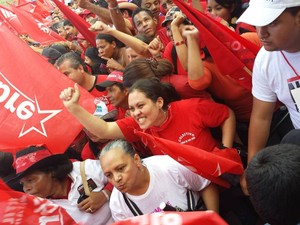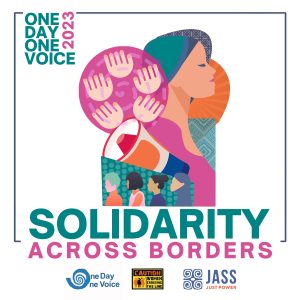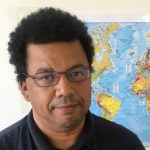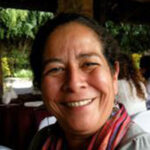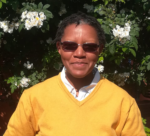Part I of JASS’ post-election analysis in Honduras. Articles written by JASS Mesoamerica’s Laura Carlsen.
Honduras went into its general elections in a state of high tension. The country has come out of the Nov. 24 vote with tensions even higher.
A lot was at stake. The nation hasn’t had a truly democratic process to select a president since the election of former president Manuel Zelaya in 2005. Since Zelaya was kidnapped in a coup d’état on June 28, 2009, the coup regime has governed the nation with an iron hand through the period of the de facto regime and later a one-sided election organized by coup leaders and boycotted by democratic forces. As a result of four and a half years of coup rule, political polarization meets economic inequality in the nation to form a volatile mix of desperation and repression.
Human rights & democracy, from a gender perspective
The Supreme Electoral Tribunal reports the final count in Honduras’ presidential race at 36.89 percent for ruling National Party candidate Juan Orlando Hernandez and 28.78 percent for Xiomara Castro of the recently formed Liberty and New Foundations Party (LIBRE). This a major upset considering most polls showed Castro in the lead up to just weeks before the vote.
But the process is not over. Opposition parties, including LIBRE and the new Anti-Corruption Party, are demanding a fair recount and review. As students hit the streets in protests over alleged fraud, the post-electoral climate is marked by conflict and uncertainty.
Shortly before the elections, an international group of journalists and human rights defenders joined with Honduran women activists to travel to Honduras to monitor respect for human rights, and in particular women’s human rights. We had good cause to be concerned. At least nine women human rights defenders have been assassinated under the coup and post-coup regimes, with 119 attacks registered in 2012 by the Mesoamerican Women Human Rights Defenders Initiative. Femicides have skyrocketed to 258% in a context of both general and targeted violence. We feared increased violence in the run-up to the elections.
The International Observatory of Women’s Human Rights and Resistance found that neither the democratic process nor human rights fared well in the recent elections. More than 90 observers fanned out throughout the country to report on the process and accompany women’s organizations. We found coercive conditions surrounding voting and serious doubts regarding the process and results.
Although the elections were carried out in relative calm and with a high turnout, the night before Maria Amparo Pineda Duarte, a human rights defender and campesino leader of Cantarranas in the Francisco Morazán Department, was murdered alongside fellow organizer and opposition member, Julio Araujo. The double murder of political activists sent an ominous signal.
“In a country where 80 percent of the population lives in poverty and 65 percent are indigent, it’s easy to manipulate need.”
Our mission, like many others, identified numerous violations of democratic principles. The first and most widespread was vote buying. In one polling place we visited in Tegucigalpa, we spoke with a young woman in tears. She had been discovered photographing her vote and been expelled. She showed us a text message offering her employment for voting for the National Party candidate and explained that she was unemployed and had no source of income. Many observers reported similar incidents, including cash payments right outside polling places.
In the days leading up to the elections, the National Party delivered thousands of “benefits cards” to impoverished voters. The back of the card identified the holder as a party supporter.
Another major problem regarded the voter lists. Many voters who appeared as dead on the lists were refused their right to vote. Other reports showed that at some stations, the “dead” were allowed to vote and real voters were rejected for other reasons.
By law the Honduran army is charged with guarding polling places and transporting election materials. The armed forces are closely tied to the political factions implicated in the coup, especially the National Party. Their presence at the ballot boxes was reported as a factor of intimidation. As one LGBT activist told us, “the 2009 elections were held at the point of a bayonet and these are the same.” Certainly, the presence of armed soldiers looked intimidating to us, and given the very recent history of the military coup and not so distant history of military dictatorships the imagery to Hondurans must be even more powerful.
The official delegations from the European Union and the Organization of American States (OAS) reported that the elections were transparent. When we witnessed the vote counting, with most parties and many observers present, the process indeed appeared straightforward and this coincided with reports from other delegations. Honduran ballots are hand-counted at thousands of polling places, tallied and scanned in to the authorities.
Where the discrepancies emerged, according to opposition parties, is in the transmission of results. LIBRE presented complaints that hundreds of tally sheets registered by the Tribunal do not match the results counted at the voting place. This part of the process was invisible to most, if not all, foreign observers.
Now both Hernandez and Castro claim victory. The two contending candidates personify the political poles of the country. Hernandez was president of the Congress that opened the door wide to transnational corporations, ceding lands long held by indigenous and campesino inhabitants, consolidated the power of the official party over political institutions, and reversed historic—although modest—advances in women’s rights and wealth distribution. He calls himself the candidate of law and order, promising a “soldier on every street corner” and has said repeatedly that he will do “anything necessary” to bring security to the nation. Despite that claim, in many cases security forces themselves—under the command of his party—have been identified as the perpetrators of violent acts and rights violations against the population. Hernandez was the driving force behind the creation of a new and largely unsupervised Military Police.
Hernandez’ party, the National Party, came to power in the elections organized by the coup regime, elections so questioned that the government led by the winner, Porfirio Lobo, was not recognized by the OAS until nearly two years later, as a result of an agreement with the ousted Manuel Zelaya. The United States government promoted and supported the 2009 elections—which were boycotted by a broad cross-section of the population, and the Lobo government from the outset.
Xiomara Castro became a prominent public figure when her husband who was then president, Manuel Zelaya, was kidnapped and then trapped in the Brazilian Embassy during the first months of the post-coup regime. She supports demilitarization and a constitutional assembly—a process to rewrite the constitution involving a broad base of citizens—a popular demand that is widely believed to have been a key motivator for the coup. Many members of the National Resistance (to the coup) joined the new party and supported her candidacy despite a major ongoing debate within their ranks. For most feminists, the fact that Xiomara is a woman was less important than her political platform and commitment to women’s issues. There, they generally found more room to advance their causes than with a conservative National Party candidate.
While the elections cracked open the traditional two-party system with nine parties participating, this kind of multiparty process translates into a weak mandate for the victor with barely a third of the vote. The National Congress—where PN has 48 representatives, LIBRE 37, the Liberal Party 27 and the new Anti-Corruption Party 13, along with a handful of others—will have to be the scene of political deal-making to function at all.
Read Part II: What next for women’s rights and movements?
Photo Credit: Feministing

